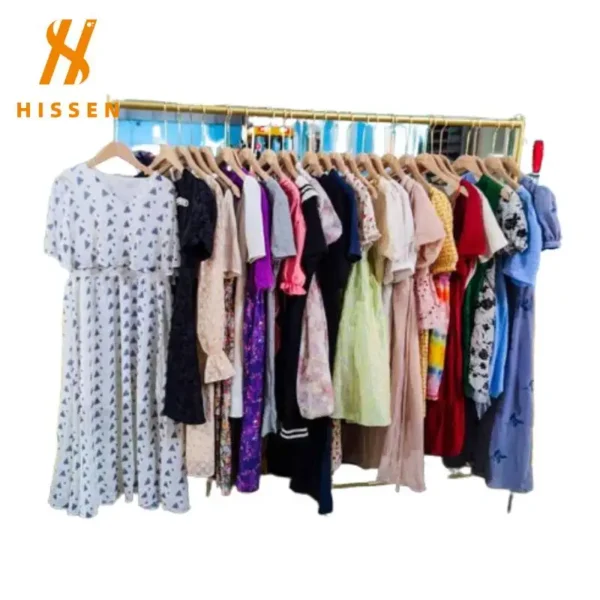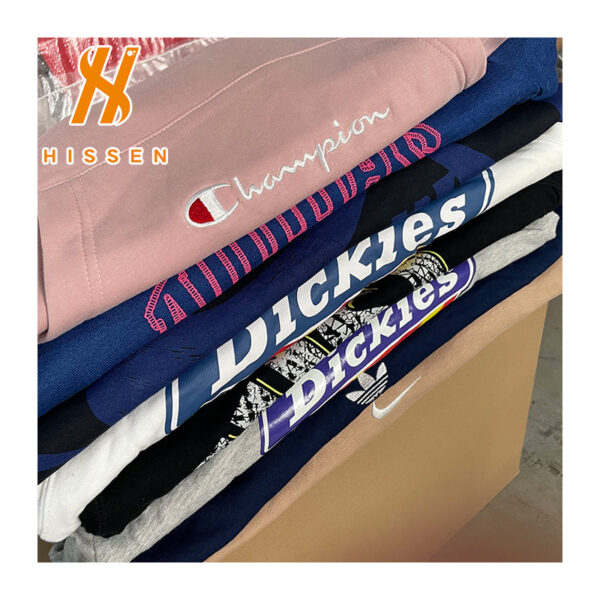Europe’s used clothes market has grown a lot lately. More people care about sustainability, costs, and fashion changes, making Europe important for used clothes—including a thriving network of used clothes wholesale suppliers. You can find everything from fancy vintage shops in Paris to large warehouses in Eastern Europe, where many used clothes wholesale suppliers operate. This reflects Europe’s complex social and economic situation.
Countries here have their own ways to collect, sort, and redistribute used clothes. Some focus on high-quality resale, others on large-scale exports of mixed rags. In Europe, second-hand clothes buyers face different suppliers, product standards, and logistics.
This guide explores important trends among used clothes wholesale suppliers in Europe’s second-hand clothing market. It spans several regions: Western, Northern, Southern, and Eastern Europe. It also includes smaller markets such as Ireland and Cyprus. If you’re a wholesaler needing bulk orders or a retailer looking for quality stock, understanding regional differences can help you find better sources.
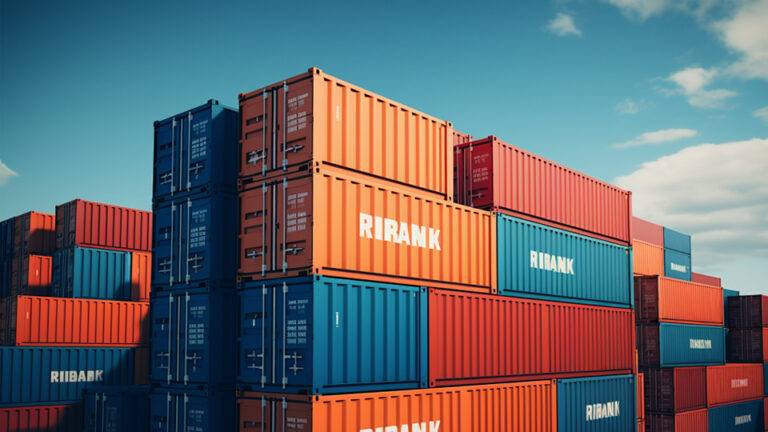
Used Clothes Wholesale Supplier in Western Europe
1. United Kingdom
The UK has a well-developed second-hand clothing industry with strong systems for collection, sorting, and export. Clothing is gathered from various sources and processed in large sorting centers that separate items by quality and type.
Most sorted clothes are shipped to Eastern Europe, Africa, and Asia. Meanwhile, vintage and branded items are resold in local markets. The country also has good logistics and more suppliers are now offering online services.
- Major collection sources: Charity shops, donation bins, home collections
- Sorting categories: Cream, A, B, C
- Common products: Casualwear, jackets, shoes, accessories
- Export packaging: Standard bales with flexible options
- Digital services: Online catalogs, ordering platforms
- Local resale trend: High demand for vintage and branded fashion
For more on the UK market, see The Used Clothes Suppliers in the UK.
2. France
France plays a big role in Europe’s second-hand clothing market. It combines a rich fashion history with growing environmental awareness. The market is influenced by local demand, especially in cities like Paris. It also has a strong export industry that manages large amounts of sorted garments.
Collection systems in France include municipal recycling programs, private collectors, and nonprofit partnerships. Used clothes wholesale suppliers in France sort clothes by grade and type, with many focusing on fashionable items ideal for resale. Paris is a popular place to find second-hand fashion. It attracts vintage and boutique shoppers alike.
- Supplier focus: Trendy and branded clothing including Zara, H&M, Uniqlo
- Grading categories: Cream and A/B grades emphasizing style
- Key locations: Paris-based sorting facilities serving domestic and export markets
- High-demand items: Light seasonal wear, women’s clothing, and accessories
- Product mixes: Mixed rags for industrial and lower-income export markets
- Market trend: Growing sustainability and ethical fashion networks
If you want to see more details and a list of trusted companies, check our full guide on the Top 5 Used Clothes Suppliers In Paris.
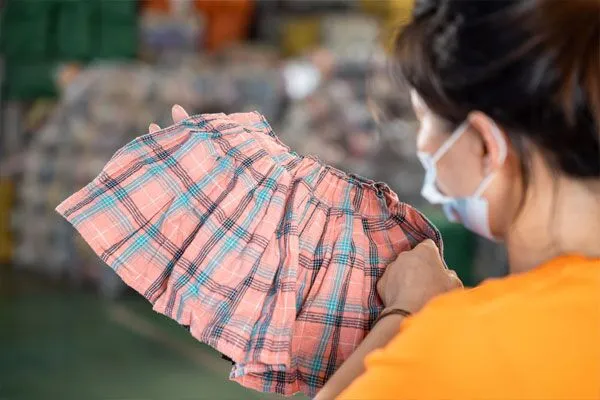
3. Switzerland
Switzerland’s second-hand clothing market is small. But people recognize it for its focus on quality and sustainability. The country has strict environmental rules. These rules promote textile recycling. As a result, a steady stream of clothes reaches the resale market.
Swiss used clothes wholesale suppliers focus on top-quality products, grading and packaging items with precision for high-end buyers. Switzerland is a key transit point for second-hand clothing. Its location connects Western and Central Europe.
- Collection methods: Municipal recycling centers and charity organizations
- Grading standards: Rigorous grading with focus on branded and nearly new items
- Export volume: Moderate, targeting premium markets
- Common products: Seasonal clothing, workwear, and children’s items
- Logistics: Efficient connections to European distribution networks
- Sustainability: Focus on sustainable fashion initiatives and transparency
For more about Swiss second-hand clothing factories and suppliers, see Top 5 Wholesale Used Clothes Factories In Switzerland.
4. Luxembourg
Luxembourg is a small country but has an important role in the European used clothing trade. Thanks to its central location and strong transport links, it works as a hub for collecting and sorting second-hand clothes. Some sorting centers in Luxembourg handle both local donations and imports from nearby countries such as Belgium, France, and Germany.
- Major collection sources: Local donations, cross-border imports, and institutional resale programs
- Types of suppliers: Sorting factories and logistics-based distributors
- Common markets served: West Africa, Eastern Europe, and Francophone regions
- Quality grading systems: Grade A, B, and cream grade, often aligned with EU norms
- Special notes: High standards in packaging and traceability due to regulatory compliance
For more details in Luxembourg, see Top 5 Wholesale Second-hand Clothes Factories in Luxembourg.
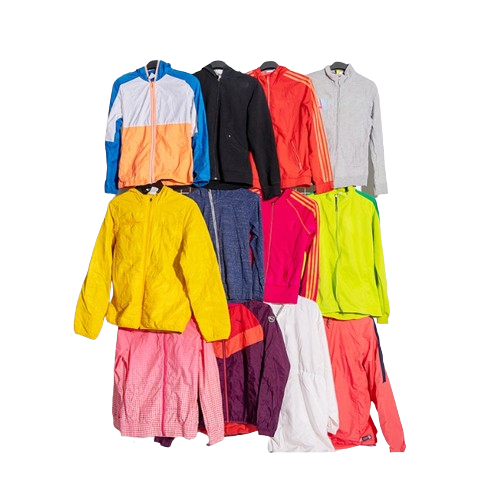
5. Belgium
Belgium is a key logistics and export hub for second-hand clothing in Western Europe. Its closeness to major ports and central spot makes it a key transit point for garments going in and out of the European market.
Belgian sorting facilities, operated by used clothes wholesale suppliers, handle various clothing grades and types, supplying both local retailers and international buyers. The market features a mix of factory-sorted and mixed rags suitable for various price points.
- Collection sources: Charity organizations, municipal textile banks, and donation drives
- Sorting grades: Cream, A, B, and C categories for diverse markets
- Export destinations: Africa, Eastern Europe, and the Middle East
- Product types: Seasonal clothing, vintage pieces, and industrial rags
- Logistics: Strong transport infrastructure for container shipments
- Ordering: Increasing adoption of online catalogs and ordering systems
If you’re interested in the Belgian second-hand clothing, see Top 5 Second Hand Wholesale Clothing Belgium.
6. Netherlands
The Netherlands is known for its advanced textile recycling and second-hand sorting abilities. Dutch suppliers benefit from strict environmental rules and high-quality standards. They serve both European and global markets.
Large sorting centres run by used clothes wholesale suppliers offer many types of clothing, including fashion wear, industrial rags, and special garments. The country is also noted for its innovation in textile reuse and circular economy initiatives.
- Collection methods: Charity organizations and municipal textile programs
- Sorting standards: Multiple grades with strict quality control
- Export markets: Africa and Asia as primary destinations
- Product types: Seasonal assortments and brand-specific lots
- Logistics: Rotterdam port facilitates global shipping
- Digitalization: Use of digital platforms for international sales
For more details on Dutch second-hand clothing wholesalers and factories, see Top 5 Wholesale Second Hand Clothes Netherlands.

Used Clothes Wholesale Supplier in Northern Europe
1. Sweden
Sweden stands out for its environmental efforts and well-organized textile recycling system. The country’s second-hand clothing market focuses on quality an sustainability. This attracts buyers who want premium items.
Swedish sorting centres, managed by used clothes wholesale suppliers, mainly provide high-quality clothing, with many items sold locally or exported to nearby countries. The market also features a strong emphasis on children’s wear and outerwear.
- Collection channels: Municipal programs, charity shops, and retail take-back initiatives
- Sorting grades: Cream and A-grade garments dominate
- Export destinations: European and Asian markets
- Product categories: Winter wear, children’s clothing, and branded casualwear
- Ordering: Growing digital ordering and transparent sourcing
- Sustainability: Strong integration of circular economy practices
For more insights into Sweden’s second-hand clothing factories and export networks, see Top 5 Wholesale Used Clothes Factories In Sweden.
2. Norway
Norway’s second-hand clothing industry, like Sweden’s, focuses on the environment and quality. The Norwegian market is smaller, but used clothes wholesale suppliers here offer high-quality, well-sorted products that attract niche buyers.
Public initiatives and charity organizations support collection efforts. They focus on reducing textile waste and promoting reuse.
- Collection methods: Charity shops, municipal textile banks, and community drives
- Grading standards: High-quality grading for branded and lightly worn garments
- Export focus: Niche markets in Europe and beyond
- Product mix: Seasonal wear and children’s clothing
- Logistics: Efficient export despite geographic challenges
- Sustainability: Textile reuse promoted through policies and programs
For more on Norwegian second-hand clothing suppliers, see Top 5 Wholesale Used Clothes Factories In Norway.
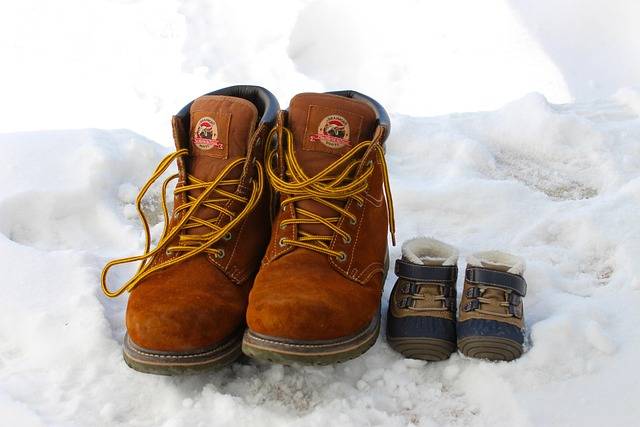
3. Finland
Finland’s textile reuse sector has strong government support and high consumer awareness. The second-hand clothing market emphasizes ethical sourcing and environmental responsibility.
Used clothes wholesale suppliers usually provide high-quality, well-sorted products to local and export buyers. This includes branded clothing and seasonal collections.
- Collection sources: Charity shops and municipal textile recycling programs
- Sorting grades: Cream and A grades with clear export labeling
- Export markets: Nordic neighbors and Eastern Europe
- Popular products: Winter outerwear, children’s clothing, and workwear
- Ordering channels: Expanding digital sales platforms
- Sustainability focus: Circular economy principles guide operations
If you’re looking for FInnish second-hand clothing, see Top 5 Wholesale Used Clothes Factories in Finland.
4. Denmark
Denmark’s second-hand clothing market is growing steadily, thanks to consumers’ interest in sustainability and quality. Collection and sorting infrastructure supports both local resale and export activities.
Danish used clothes wholesale suppliers prioritize clean, well-graded garments, with more facilities now using digital order systems. More facilities are now using digital order systems.
- Collection methods: Municipal programs and charity organizations
- Sorting: Condition and seasonal classification
- Export regions: Europe and developing markets
- Product categories: Children’s wear, casual apparel, and workwear
- Logistics: Improved transport supports reliable shipping
- Sustainability: Core industry driver in Denmark
Top 5 Wholesale Second Hand Clothes Denmark details Denmark’s second-hand clothing factories and supplier networks.
5. Iceland
Iceland’s second-hand clothing sector is small but organized. It focuses on quality and sustainability. The market serves domestic needs and exports to Nordic neighbors.
Collection happens mostly at local charity shops and municipal programs, with sorting by used clothes wholesale suppliers focusing on premium grades.
- Collection approach: Community-driven textile collection with environmental support
- Grading: High standards focusing on resale-quality garments
- Export volume: Modest, targeting niche markets
- Product categories: Winter wear, children’s clothing, and branded apparel
- Logistics: Efficient despite geographic isolation
- Sustainability: Deeply embedded in operations
For details on Icelandic suppliers, see Top 5 Wholesale Used Clothes Factories In Iceland.
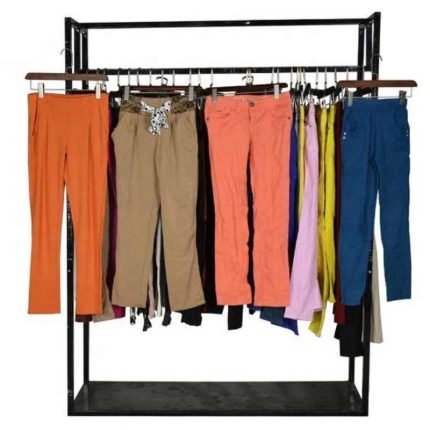
Used Clothes Wholesale Supplier in Southern Europe
1. Spain
Spain is now a major supplier of used clothes, with big sorting centers serving export markets. The country has great prices and large quantities, especially for mixed rags and seasonal clothing.
Spanish used clothes wholesale suppliers source garments from local collections and imports from across Europe, mainly serving buyers in Africa and Latin America.
- Collection sources: Charity shops, municipal programs, and private collectors
- Sorting grades: Cream to industrial rag levels
- Popular products: Summer wear, children’s clothes, and mixed rags
- Logistics: Strong port facilities support exports
- Packaging: Customized bales for different markets
- Ordering: Gradual expansion of online platforms
You can explore detailed analyses of Spanish wholesale used clothes factories in Top 5 Wholesale Used Clothes Factories in Spain.
2. Portugal
Portugal is important in Europe’s second-hand clothing export market, mainly supplying mixed rags and sorted clothes. The country benefits from a strategic location and established logistics infrastructure.
Portuguese used clothes wholesale suppliers often focus on bulk shipments to Africa and Latin America, providing competitive prices and flexible packaging options.
- Collection methods: Donations via charity organizations and municipal programs
- Sorting focus: Bulk packaging for export markets
- Popular exports: Industrial rags and summer mix clothing
- Logistics: Efficient port shipping options
- Customization: Flexible product mixes by client needs
- Digitalization: Improved communication and ordering channels
Further information on Portuguese second-hand clothing factories can be found in in Top 5 Used Clothing Wholesale Factories in Portugal.
3. Italy
Italy has strong demand for high-end vintage fashion and a lively second-hand clothing wholesale market. Its major cities serve as hubs for sorting and exporting a wide variety of garments.
Italian used clothes wholesale suppliers offer factory prices on sorted clothing, catering to both boutique retailers and bulk importers.
- Collection systems: Charity shops and municipal textile programs
- Sorting grades: Wide range covering various garment categories
- Export focus: Branded fashion, casualwear, and children’s clothing
- Key hubs: Milan, Naples, and Florence
- Order types: Bulk and specialized assortments
- Communication: Flexible order sizes and digital contact
Top 5 Used Clothes Suppliers In Italy provides further insights into this market.

Used Clothes Wholesale Supplier in Eastern Europe
1. Russia
Russia’s used clothes market is growing because of rising demand for affordable clothing. Used clothes wholesale suppliers offer big amounts of mixed rags and sorted clothing for local and export buyers.
Sorting centres in Russia and the Kaliningrad region are key points in the local textile trade.
- Collection: Charitable organizations and municipal programs
- Product focus: Bulk shipments and industrial rags
- Export markets: Neighboring countries and developing regions
- Categories: Mixed rags, seasonal wear, and children’s clothing
- Logistics: Kaliningrad hubs for regional distribution
- Digital trends: Growing supplier professionalism and online presence
For a complete list of Russian second-hand clothing suppliers, see Top 5 Mix Rags Wholesalers in Russia.
2. Belarus
Belarus has become a notable transit and sorting hub for second-hand clothing in Eastern Europe. The country supplies both local markets and re-exports to neighbouring nations.
Belarusian used clothes wholesale suppliers offer mixed rags and sorted apparel to meet a variety of buyer demands.
- Collection: Municipal textile banks and charity drives
- Sorting: Cream, A, and mixed rag categories
- Export routes: Russia, Poland, and other neighbors
- Product range: Industrial rags to resale-quality garments
- Packaging: Flexible sizing and order quantities
- Communication: Digital tools facilitate international trade
Top 5 Mix Rags Wholesalers in Belarus provides more details on market structure and key players.
3. Lithuania
Lithuania’s location in Eastern Europe makes it a key sorting and export center. Its second-hand clothing market serves both local consumers and international importers.
Lithuanian used clothes wholesale suppliers emphasize transparent grading and customer-focused product mixes.
- Collection: Charities and municipal authorities
- Sorting grades: Cream, A, B, and mixed rags
- Export markets: Western Europe, Russia, and Africa
- Popular products: Children’s clothing, summer wear, industrial textiles
- Logistics: Efficient container shipments
- Ordering: Online platforms improve communication
For further exploration of Lithuanian suppliers, Top 5 Mix Rags Wholesalers in Lietuva is available.
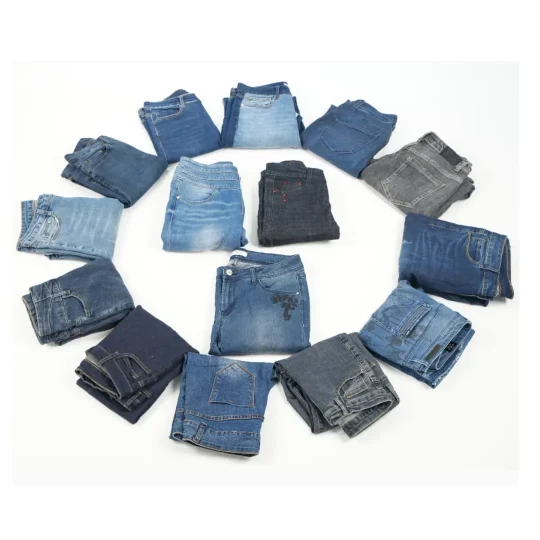
Niche Markets
1. Ireland
Ireland’s used clothes market is similar to the UK’s, relying heavily on imported items and charity collection systems. Domestic sorting facilities, operated by used clothes wholesale suppliers, supply both local and international buyers.
- Collection sources: Charity shops and municipal textile programs
- Sorting grades: Cream and A-grade garments
- Import focus: Mainly from the UK
- Export volumes: Moderate with growing digital sales
- Popular items: Casualwear and children’s clothing
- Sustainability: Increasing consumer awareness and interest
For insights on second-hand clothing in Ireland, see Top 5 Wholesale Second Hand Clothes Factory In Ireland.
2. Cyprus
Cyprus has a niche market with seasonal demand, especially for summer clothes. Used clothes wholesale suppliers source garments from Western Europe as their main region. They export these to markets in the Middle East and North Africa.
- Collection: Donations and limited local textile programs
- Sorting focus: Lightweight summer wear and mixed rags
- Geographic advantage: Strategic location for regional trade
- Packaging: Flexible bale options for export
- Market trends: Growing sustainable fashion interest
- Ordering: Digital communication eases international access
For more about second-hand clothing suppliers in Cyprus, see Top 5 Most Popular Second Hand Clothes Supplier In Cyprus.
Conclusion
Europe has a varied and complex second-hand clothing market, and each region has its own unique advantages. Western Europe has matured systems and quality grading. Northern Europe emphasizes sustainability and premium goods. Southern Europe provides competitive prices and high volume. Eastern Europe is a growing import and sorting hub. Smaller niche markets like Ireland and Cyprus offer products suited to their unique geography and climate.
Buyers looking for second-hand clothing from Europe should consider these key factors:
- Product grading
- Supplier reliability
- Packaging options
- Export readiness
Understanding regional market trends can help businesses find the best used clothes wholesale supplier.

